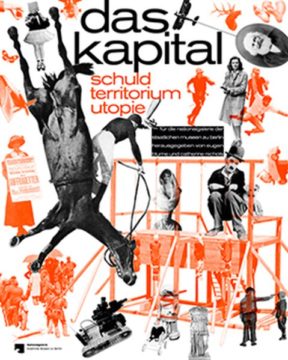The banking, financial and euro crises that shook the European and international markets
in recent years have made it more necessary than ever to address the relationship between
humans and capital. A special exhibition on this theme has been staged by the contemporary
arts museum Nationalgalerie im Hamburger Bahnhof – Museum für Gegenwart
– Berlin
under the title “Capital. Debt – Territory – Utopia”, for which we provide a comprehensive
catalogue.
Displaying works by some 40 contemporary international artists in addition to selected
artworks and artefacts from antiquity to the present, the show explores people’s ideas of
value throughout the ages. Joseph Beuys’ key work Das Kapital Raum 1970–1977, created
in 1980 for the Venice Biennale, occupies a central place in the exhibition as it perfectly
captures Beuys’ redefinition of capital. For Beuys, it is not money but rather the creative
potential of people that constitutes value: “art = capital”.
The book investigates the changing definition of capital in three chapters. The first chapter
entitled “Debt” argues that debt (especially the inherited debt of original sin in a religious
sense) predates money and is more elementary
than the latter. The second chapter is headed
“Territory” and explores the connections between capital and the discovery and conquest
of global space beginning in the early modern period. The third and final chapter entitled
“Utopia” questions Beuys’ positive idea of capital that is based on creativity.
- Veröffentlicht am Freitag 15. Juli 2016 von Verlag Kettler
- ISBN: 9783862065769
- 252 Seiten
- Genre: Hardcover, Kunst, Softcover
